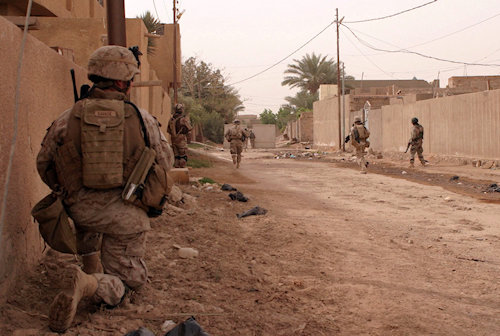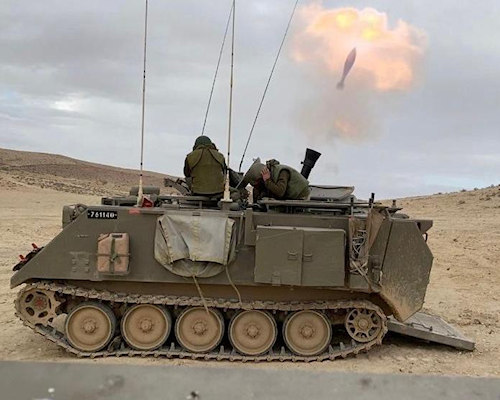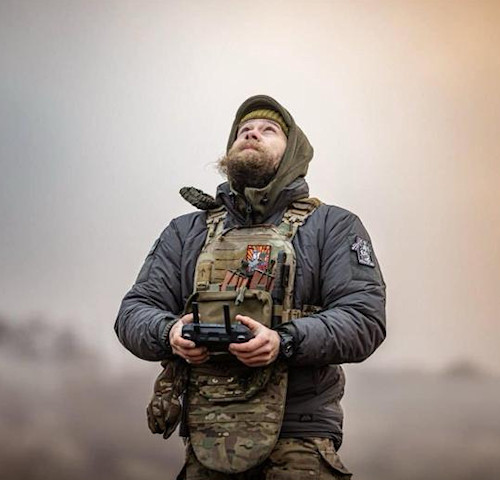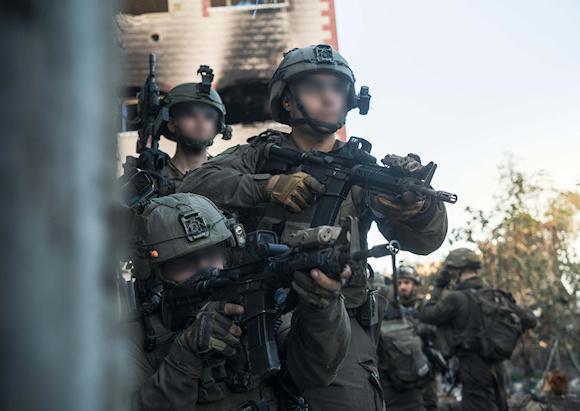The battlefields are increasingly moving towards population centers: this was witnessed by the war in Ukraine, with the long months of siege of Mariupol, Bakhmut, Avdiivka and Kherson, and the fighting in Gaza City and Khan Younis, in the latter war destined, it seems - or at least in Netanyahu's words - to last until 2025.
The two conflicts are examples of markedly different types of modern warfare: Ukraine is largely one conflict conventional between states raging across thousands of kilometers of disputed territory, and each other, it is a clash unconventional between a terrorist group and a regular army fighting in a cramped and densely populated urban area. However, the two conflicts have in common the battles for the control of population centers, confirming the tendency of the contenders, already evident in Syria and Iraq in the past decade, and still ongoing in some areas, to challenge each other on a large scale in an urban war , with a trend that now seems to be increasing, with the inevitable consequence of imposing revisions also on the Western military modus operandi. This is a consequence of some evident elements that compose completely new scenarios regarding the national security of numerous state entities and, consequently, also international stability. And Italy, due to the place it occupies in Europe and the Mediterranean, cannot be considered excluded.
United Nations sources say that in 2050, 68% of the world's population will reside in metropolises1: and given the growing international instability, the proliferation of non-state armed entities (NSAG), supported by small-medium powers, and also considering the cost-effectiveness of several weapon systems, equally effective and lethal compared to heavy but expensive equipment at disposal of the regular armed forces, Western military sources are increasingly speaking of the urgency for their defense forces to master, with new tactics and materials, what they call MOUT, i.e. military operations on urbanized terrain.
 The same US forces have the experience, acquired in recent decades, to also fight NSAG in urban centers (Fallujah and Ramadi - photo) or to support local forces that fought the Islamic State (Mosul and Raqqa). However, they have not faced – at least in recent decades – the kind of challenges that the Israel Defense Forces (IDF) are now encountering in urban areas such as Gaza and Khan Younis. Perhaps, precisely from what is happening in the Strip, it is already possible to outline some lessons learned for these new MOUT challenges that seem likely in the very near future.
The same US forces have the experience, acquired in recent decades, to also fight NSAG in urban centers (Fallujah and Ramadi - photo) or to support local forces that fought the Islamic State (Mosul and Raqqa). However, they have not faced – at least in recent decades – the kind of challenges that the Israel Defense Forces (IDF) are now encountering in urban areas such as Gaza and Khan Younis. Perhaps, precisely from what is happening in the Strip, it is already possible to outline some lessons learned for these new MOUT challenges that seem likely in the very near future.
Initially, and it is known, the greatest difficulties for the IDF were due to the continuous launch of rockets and the presence of tunnels2, challenges that have led the Jerusalem forces not only to make good use of the lessons learned from previous conflicts (such as the one in 2014)3 but also to urgently review operational tactics, with the relative introduction of innovative weapons and modifications to the vehicles supplied, to the point of modifying the use4 and the structure of its military units5, such as the expansion of operations to special anti-terrorism units (Lotar) and the presence, for an estimated 40% of fighters, of female soldiers (in particular, the Caracal Unit). In short, a war against Hamas, an NSAG enemy, which makes terrorism its dominant tactic but which operates militarily and exclusively from a heavily inhabited habitat and which launched, with the attacks of 7 October, the largest kamikaze operation for its own Palestinian people. Hence the war challenges for the Tsahal (Armed Forces of the State of Israel, ed.) for operational uses which will be the subject of future studies in anticipation of a proliferation of that type of war environment.
The continuous firing of rockets from Gaza towards Israel, with the inevitable shield guaranteed by Iron Dome, forced the IDF to introduce new, more performing operational tools, such as the mortar Iron sting (following photo), supplied to the Maglan unit, used to hit the Hamas rocket launchers located in Gaza City. The latest generation Jewish shoulder-fired missiles also appeared, Holit e Yated, named after two kibbutzim affected in the October massacres. These missiles, with a longer range and 50% larger than their predecessors, were designed to fight precisely in dense and heavily built-up areas6.

For combat on the ground, in addition to providing soldiers with glasses for three-dimensional vision Gone for operations in tunnels or in situations of poor visibility such as dawn and dusk, SMASH Fire Control System (FCS) electro-optical sights from the Smartshooter company (Israel) have been adopted on their assault rifles. lighter than their predecessors and capable of identifying an enemy in fractions of a second, blocking the image of targets and consequently quadrupling the chances of their elimination. The IWI (Israeli Weapon Industry) Negev NG7 (7.62x51mm Nato) was also used in Gaza7, a machine gun that offers greater penetration of walls and rubble than those previously equipped.
The all-out war on the command of terror and on the underground networks of Hamas (whose use as refuge bunkers for its civilians has always been strictly forbidden) has also imposed changes in the air domain, although in a highly populated urban environment and, precisely because this, always preceded by the Israeli appeal to Palestinian civilians for a preventive eviction. The IAF's Adir fighter units (140 Squadron, Golden Eagle, and Squadron 116, Southern Lions) were externally equipped with dumb bombs of the Joint Direct Attack Munition (JDAM) system - Israel is the first country in the world to use them operationally - guaranteeing its aircraft a supply of different types of bombs, for more attacks in fewer flights, thus showing flexibility and greater adaptability in order to to combine different sorties into a single mission.
This war on Hamas also led to operational revolutions in the sea domains (first use of Saar 6 ships)8 and of the sky. To defend Israel against attacks from the air, in particular those coming from the Red Sea by the Houthis, as well as Iron Dome and the US-supplied Patriot surface-to-air system, the IDF employed the Arrow(Hetz)3 long-range defense system (US and Israel) 9, thus entering its first operational use. This came after the successful deployment of Arrow 2 at the beginning of November, which probably marked (according to Israeli sources) the first ever case of combat outside the Earth's atmosphere.10 : both Arros were designed, in fact, as advanced air defense systems to intercept ballistic missiles in space. To Iron Dome, Patriot, Arrow joined the more modest Israeli David's Sling medium and long range air interception system, in a historic collaboration, for the first time, with four systems simultaneously.
 However, the new conflicts are showing how the meaning of air superiority has changed when both regular conventional forces (Ukraine - photo) and the latter against NSGA (Gaza) are confronted. Hamas' October 7 aggression itself included multiple attacks by relatively cheap drones, against high-tech air and naval targets, many of which were effective, despite Israel's undisputed conventional air dominance. Both conflicts, therefore, suggest that true air superiority can no longer be achieved merely by building a multibillion-dollar, high-tech fleet to defeat adversary capabilities. Also because there will be even more drones than the current ones flying over future battlefields, given their cheapness and, consequently, wide availability for any small and medium power state or NSAG that wishes to buy them.
However, the new conflicts are showing how the meaning of air superiority has changed when both regular conventional forces (Ukraine - photo) and the latter against NSGA (Gaza) are confronted. Hamas' October 7 aggression itself included multiple attacks by relatively cheap drones, against high-tech air and naval targets, many of which were effective, despite Israel's undisputed conventional air dominance. Both conflicts, therefore, suggest that true air superiority can no longer be achieved merely by building a multibillion-dollar, high-tech fleet to defeat adversary capabilities. Also because there will be even more drones than the current ones flying over future battlefields, given their cheapness and, consequently, wide availability for any small and medium power state or NSAG that wishes to buy them.
It's about commodification (commodification) of military technology: from highly developed and expensive to a commodity bought and sold cheaply every day. In fact, remaining in Gaza, but some studies have also verified it in Ukraine11, the costs of the weapons supplied to NSGAs like Hamas are accessible and ridiculous compared to what is opposed to them: a Hamas Qassam missile (with fuel based on sugar and fertilizers) costs from 300 to 800 dollars compared to the 50 thousand dollars of each Tamil interceptorIron Dome (a single battery costs 100 million dollars); Israeli Merkava 4M tanks cost 3,5 million dollars per unit and their vulnerability in urban environments is known, even just to Hamas' homemade al-Yassin 105 missiles12 which are estimated to cost $200 each. The same economic rigor can be used for drones, a crucial topic at the moment, especially for Ukraine (the Russian Zala Lancet costs 35 thousand dollars compared to 11 million dollars for a Leopard II tank) or for Houthi missiles ($2 each compared to a $2 million US Navy enforcement system).
In short, the new wars such as in Ukraine and that in Gaza, only partially examined here, are highlighting totally new environmental (highly populated urban areas) and instrumental (effective and economic weapons) operational trends, with the dominant presence of highly ideologically determined subjects. (Russia and Hamas) and easily sponsorable, as happens for numerous NSAGs in the world, in this case, Hamas and Houthis, but also Hezbollah, not analyzed here but a very challenging antagonist for Israel. This should lead to urgent reflections on the nature of the new threats, on the effectiveness of the highly technological deterrence of conventional state defense systems (with possible revision regarding the destination of the rich Western military budgets) and the emergency regarding the development of new operational tactics , just like a time for those counterinsurgencies in Afghanistan and Iraq - but hopefully with less internal doctrinal controversies and more conviction, given the results - in the face of a proliferation, in all domains, including new (underground) ones, of superabundant and cheap armament in the numerous serious crisis scenarios that characterize strategic geographical areas, such as the Middle East and Ukraine alone, to remain close to our national territory.
4 The Kfir Infantry Brigade, the 5th Reserve Division, the 888 Refaim Unit were used for the first time in Gaza.
5 Given the enormous recall of reservists, the IDF established a new Brigade, the Hashomer 855 to protect the settlements on the border with Gaza.
8 Even before entering the Strip, in October, the Israeli Navy used its Saar 6 ships (INS Oz, INS Magen) for the first time to attack the coasts of Gaza, hitting Hamas infrastructure, such as weapons depots and naval command of the terrorist group, to then be used in the Red Sea to defend Eilat from Houthi attacks. https://www.jpost.com/israel-news/defense-news/article-768665
12https://www.defensemirror.com/news/35373/Hamas_Destroying_Israeli_Tanks_...
Photo: IDF/U.S. DoD/X












